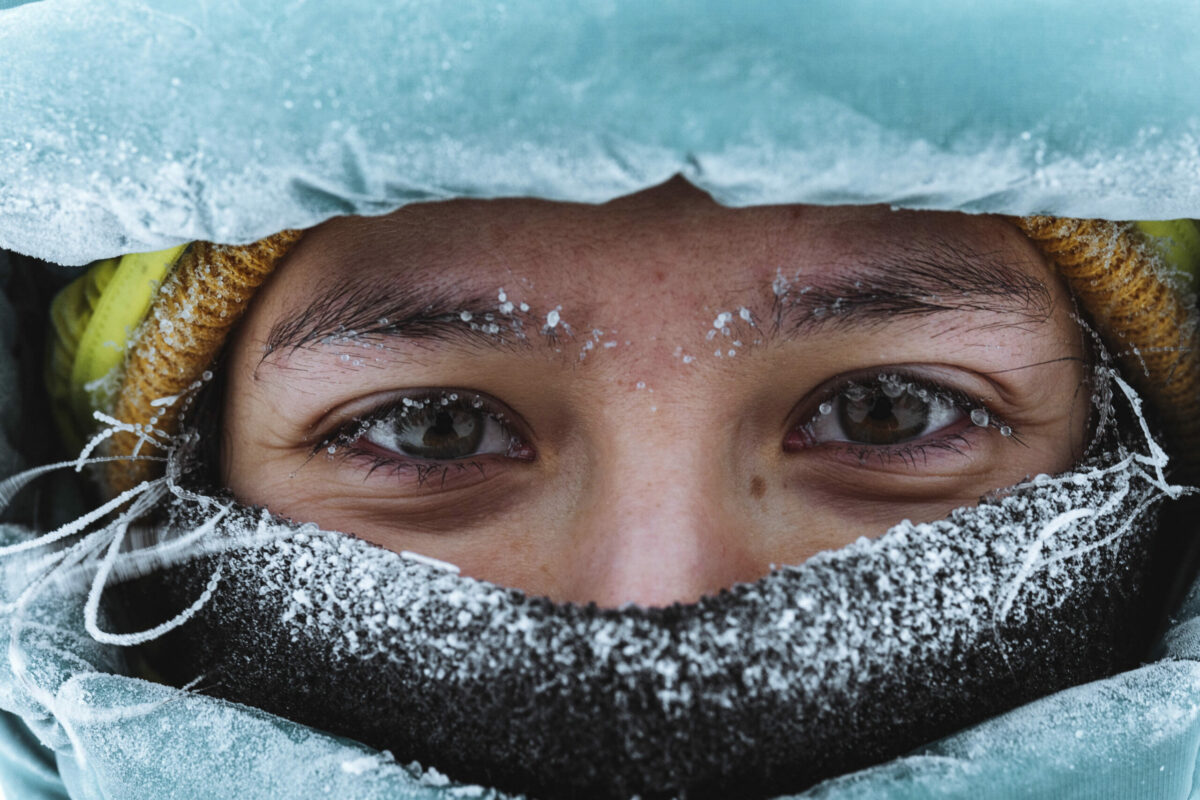An injury caused by freezing the skin and underlying tissues is called frostbite. However, this condition in the early stages is called frostnip and causes cold feelings and numbness after that. The skin color may change as the condition gets worse. It also may become hard and waxy-looking. The risk of developing frostbite increases if the skin is exposed to freezing cold, windy, or wet conditions for a long period. Moreover, this condition may occur even with gloves or other clothes.
Rewarming may reduce the symptoms of mild frostbite. If you experience a more severe form of this condition, you should seek medical attention right away. Otherwise, it may lead to permanent damage to skin, muscle, bone, and others.
Symptoms
People with frostbite usually experience the following symptoms. For example:
- Pain
- Blistering after rewarming
- Cold and hard skin
- Clumsiness caused by joint stiffness usually
- Tingling
- Numbness
- Patches of the skin that may be red, white, blue, gray, purple, or brown. The skin color depends on how severe frostbite is.
In most cases, frostbite affects fingers, toes, ears, cheeks, penis, chin, and tip of the nose. Sometimes, people do not understand they have frostbite because of numbness and skin color is difficult to see on brown and Black skin. Check below the stages of this condition:
- Frostnip – This is the early stage of the condition and it causes the following symptoms. For example pain, tingling, and numbness. It also does not cause permanent skin damage.
- Mild to moderate frostbite – People who experience this stage of the condition may notice slight skin color changes. The skin may start to feel warm, which usually means serious skin involvement. The skin may look patchy and the negatively affected region may burn, swell, and sting after rewarming. This condition in this stage is sometimes called superficial frostbite.
- Deep frostbite – This is a severe form of the condition that affects all skin layers and other tissues below. In such cases, the skin color turns white or blue-gray, and large blood blisters may appear within 48 hours after rewarming. After some weeks the skin may turn black and hard, which means the tissue begins to die.
Seek emergency care if any of the following symptoms occur. Examples include:
- Sleepiness
- Walking and speaking problems
- Intense shivering
- Persistent pain even after pain relievers
Usually, people with previous symptoms have hypothermia. That’s why require immediate medical attention.
There are some tips that may help you while waiting for an emergency. For example:
- Remove wet clothes and get out of the cold
- If you think you have hypothermia, you should wrap in a warm blanket
- Protect damaged area
- Do not walk on frostbitten feet or toes
- Use a pain reliever and drink a warm nonalcoholic drink if it is possible.
Causes
The main cause of frostbite is exposure to freezing cold. The risk of developing this condition also increases if the weather is windy and wet. However, frostbite also may occur due to direct contact with freezing metals, ice, or very cold liquids.
Risk Factors
Anyone can develop this condition but the following factors put you at increased risk. For example:
- Regularly tobacco product use (such as smoking)
- Previously have had frostbite or another cold injury
- Impaired judgment while in very cold conditions
- Being an older adult or infant the risk of frostbite increases because people in these age groups have difficulty producing and maintaining body heat
- Cold conditions at high altitude
- Some health conditions including diabetes, exhaustion, poor blood flow, congestive heart failure, and others
- Not wearing protective clothing while being in very cold conditions
What are the Possible Complications of Frostbite?
People with frostbite may also experience some complications, especially without treatment. For example:
- Infections
- Long-term numbness
- Changes or loss of nails
- Excessive sweating (also known as hyperhidrosis)
- An increased risk of future frostbite and sensitivity to cold
- Hypothermia
- Tetanus
- Gangrene
- Growth problems if frostbite damages a bone’s growth plate (in children)
How to Prevent Frostbite?
Fortunately, there are multiple options to prevent this condition. Check below some tips that may help you stay safe and warm:
- Limit outdoor time because the risk of frostbite increases if you are exposed to freezing conditions, especially for long periods. Furthermore, this condition may happen suddenly if the skin touches something cold (such as freezing metal).
- It is advised to dress in loose layers because it helps keep air trapped between the layers. As a result, it may help insulate you from the cold. However, it is advised to wear wind and waterproof clothes on the outer layer.
- Wear a headband for cold weather or a hat that helps cover your ears.
- You should also wear mittens because provide better protection than gloves, socks, and sock liners to provide insulation from moisture.
- It is advised to carry emergency supplies when traveling and warm clothes because you may become stranded.
- Do not drink alcoholic beverages while staying in cold weather because it makes the body lose fat quickly.
- Eat well-balanced foods and stay hydrated
- In addition, you can do exercise because it helps stay warm but don’t do it to the exhaustion point.
Diagnosis
Doctors usually diagnose this condition based on symptoms. However, sometimes, they may perform some tests to check for bone and muscle damage. These include X-rays or an MRI (magnetic resonance imaging). To determine damage extent usually takes up to 4 days.
Treatment
The first aid for frostbite includes:
- Call emergency call if you suspect hypothermia
- Protect affected regions from further damage and it is very important to avoid rewarming if there is a chance to freeze again
- Remove wet clothes and get out of the cold
- You should not walk on frostbitten toes or feet if possible
- Administer an over-the-counter (OTC) pain reliever
- Drink a warm but nonalcoholic drink
- Get off all tight items (such as rings)
In any case, it is advised to seek medical care after providing first aid to determine the extent of damage and possible treatments you need. Check below some common treatment options for people with frostbite:
- Doctors may rewarm the affected area using a warm-water bath for 20-30 minutes. Thereafter, the skin should turn soft.
- Painkillers (also called pain relievers) either prescription or nonprescription
- Your doctor also may use sterile sheets, towels, or dressings to protect the affected area.
- Healthcare providers may prescribe some infection medications if they notice blisters that look infected on your skin.
- Medicines – These include intravenous medicines to improve blood flow. Doctors usually recommend a thrombolytic (such as TPA) but there is another recently FDA-approved medicine for severe frostbite in adults. It is called Iloprost and it helps reduce the risk of finger or toe amputation. Flushing, headaches, and heart palpitations are the most common adverse reactions to this medication.
- Frostbitten skin should be removed to heal properly. Thus, doctors may advise debridement (a procedure used to remove dead, damaged, or infected tissue).
- Those who experience severe frostbite may need surgery or amputation to remove decaying or dead tissue.
Frequently Asked Questions
Can frostbite go away on its own?
Yes, but in mild cases only, if you experience a more severe form, you might need medicines and even other procedures. If you suspect hypothermia, immediately contact your doctor.
What are the frostbite stages?
- 1 – It causes skin irritation and pain.
- 2 – No major damage but skin blisters may appear.
- 3 – The condition affects all skin layers and may cause permanent damage to the tissues.
- 4 – Happens when the tendon and bone freeze.
For more details, talk with your healthcare professional.
How common is frostbite?
It is a rare but serious condition that affects approximately 200,000 people each year in the United States. If you have additional questions, ask your healthcare professional.




